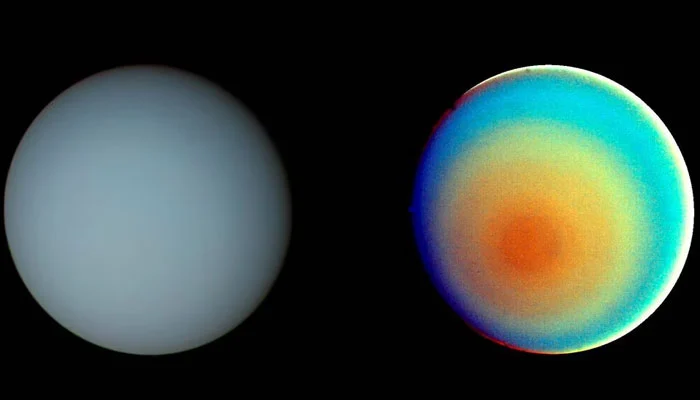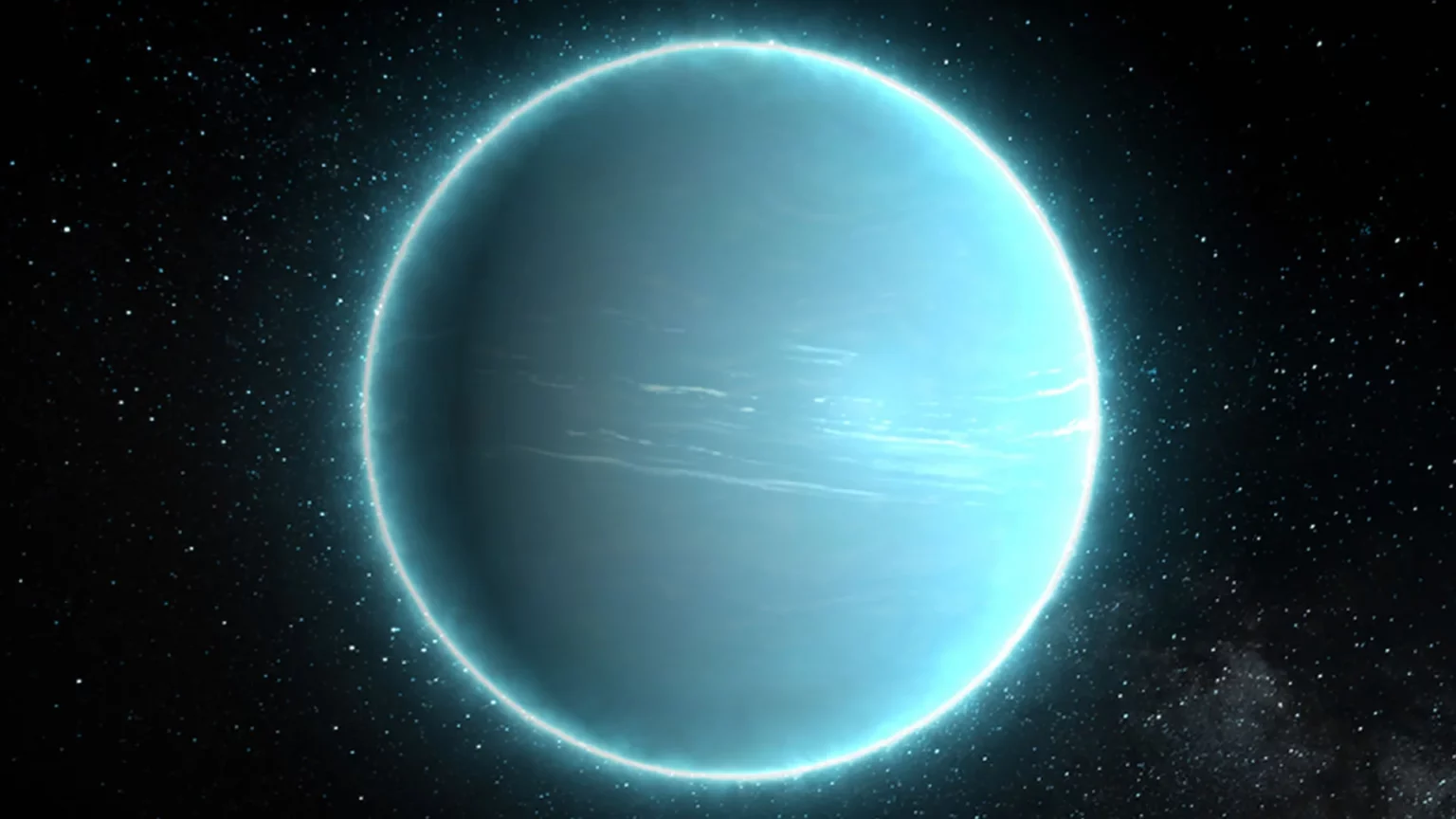Recent breakthrough observations conducted by US astronomers using a telescope in New Mexico have provided valuable insights into the enigmatic atmosphere of Uranus, the seventh planet in our solar system. Uranus, known for its peculiar sideways rotation, has long fascinated scientists due to its limited exploration. With the help of these new observations, researchers have gained a deeper understanding of the planet’s atmosphere, comparable to its neighboring planet, Neptune. The findings, published in the journal Geophysical Research Letters, shed light on the unique features and dynamics of Uranus.
Led by planetary scientist Alex Akins from NASA’s Jet Propulsion Laboratory in California, the study delves into the distinctive characteristics of Uranus. Akins emphasizes that while Uranus shares similarities with Neptune in terms of its atmospheric composition and interior structure, it exhibits peculiar attributes. The planet’s unconventional sideways spin and misaligned magnetic field set it apart from other celestial bodies. Despite its weaker atmospheric circulation and internal heat release compared to Neptune, Uranus showcases an array of dynamic features and storms.
Unveiling Uranus’ Secrets
Uranus, with its striking blue-green appearance resulting from methane gas in its atmosphere, boasts the third-largest diameter among all planets in our solar system. Its colossal size allows 63 piles of earth to fit within its circumference, making it an intriguing subject of study. Orbiting the sun at a distance of approximately 1.8 billion miles (2.9 billion km), Uranus completes its elliptical orbit in a staggering 84 years. Its unique tilt gives the impression of Uranus rolling while orbiting the sun, adding to the planet’s mystique.
Telescopic Insights into Uranus’ Atmosphere

Using the powerful Very Large Array (VLA) telescope, scientists were able to penetrate the upper atmospheric clouds and gain unprecedented visibility into Uranus. The observations revealed the presence of a robust polar cyclone near the planet’s north pole. Remarkably, the cyclone’s center measures a quarter of Earth’s diameter, indicating its substantial scale. Although the exact diameter of the cyclone remains unknown, it potentially exceeds the size of our planet.
Polar Cyclones: A Common Phenomenon
The research findings affirm the presence of polar cyclones in all planets within our solar system boasting a significant atmosphere, except Mercury. Saturn’s moon Titan also exhibits these cyclones. Polar cyclones are characterized by intense winds influenced by the planet’s rotation, manifesting as clockwise on Venus and Uranus and counterclockwise on other planets. While the formation of polar cyclones varies across celestial bodies, their strength on Earth is modulated by seasonal variations in sunlight. The researchers note that further investigations are needed to understand the specific mechanisms governing cyclone formation on Uranus.
Unanswered Questions and Ongoing Exploration
Uranus continues to intrigue scientists with its many unanswered questions. Key inquiries include the origin of its unique sideways tilt, the composition of its icy interior compared to gas giants like Jupiter and Saturn, the misalignment of atmospheric banding features with measured wind speeds, the dryness of its pole compared to the equator, and the potential presence of ocean worlds among its numerous satellites (moons). These mysteries highlight the need for further exploration and research to unravel the secrets hidden within Uranus.
The recent telescopic observations of Uranus have provided invaluable data, offering a glimpse into the dynamics of its elusive atmosphere. Scientists are gradually uncovering the planet’s distinct features, shedding light on its sideways rotation, misaligned magnetic field, and the presence of a massive polar cyclone. As exploration and research efforts continue, further breakthroughs are expected, paving the way for a comprehensive understanding of Uranus and its place in the cosmos.




